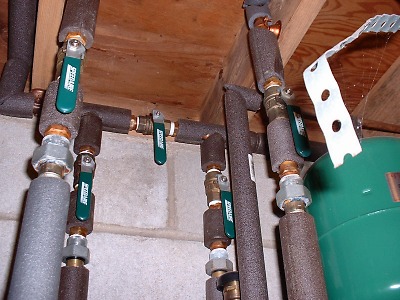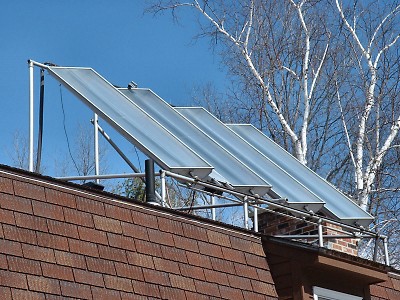
It all began when I bought a used set of sun-tracking solar collectors. They were originally controlled by a single-board computer located in the motor drive housing. The original owner was selling them after a lightning strike toasted the SBC and the company that built it seemed long gone. Since the panels and hardware were delivered totally disassembled, it took a while just to figure out how all the mechanicals went together! The solar panels were originally test-assembled in the cellar and used for program debugging and testing while the control unit was under development.

During installation, the collectors were positioned on the roof so that each of the 8 mounting legs sat over a roof truss. 3/8 inch threaded rod ties each leg's two L brackets straddles the truss below and attaches to a four foot long section of unistrut inside the attic. The unistrut was used to distribute any possible wind generated loading across multiple roof trusses. The collector feed and return lines penetrated the roofing material via 3/4 inch waterproof bulkhead fittings.
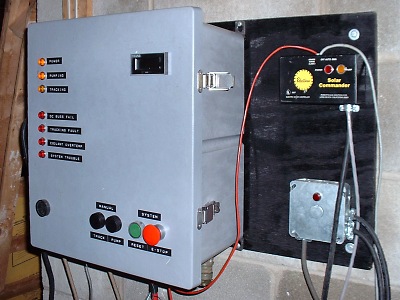
I replaced the single board computer with a home made control unit based on an Allen-Bradley SLC-100 programmable controller. A quad op-amp comparator was used to convert the analog coolant temperature signals from two thermistors as well as the two photodetector analog outputs used in the sun position sensor into on/off levels for the PLC. The comparator also checks outdoor brightness levels from the sun position sensor against a fixed reference for day/night detection. The comparator outputs fed the PLC inputs, and all time delay/hysteresis functions are handled by timers in the PLC software.
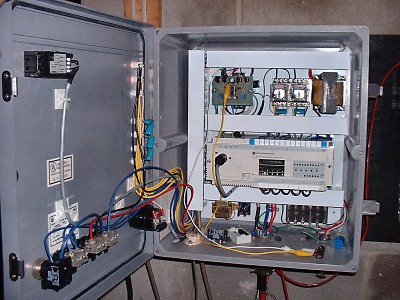
I designed and built the control panel, and wrote the ladder-logic program for the PLC. The PLC was programmed using a $28 off-the-shelf RS-232 to 422 converter in place of the rather expensive Allen-Bradley RS-232 interface. The program included routines for tracking the sun, cycling the circulating pumps, returning the panels to home position at night, detecting stalled or broken drive components, and failures of the DC bus, to name a few. A 20 conductor shielded cable connects the control unit, which is located in the cellar, to the roof mounted thermistors, photo detectors, limit switches, and positioning motor. It took about 6 months to to build and debug all the electronics and software, and another 2 months to mount and install all the mechanicals and piping.
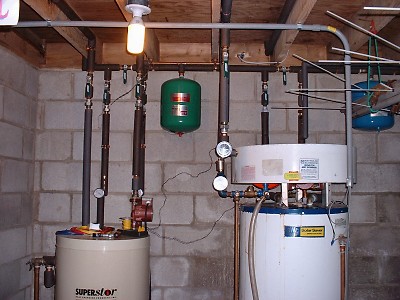
The 80 gallon solar storage tank with external heat exchanger (right) was piped ahead of the existing Superstor indirect water heater (left), allowing it to function as a pre-heater. All tanks were piped with isolation and by-pass valves for ease of servicing. Dielectric unions were used to isolate both water tanks electrically for addded corrosion protection from circulating ground currents. Each tank is equipped with a vacuum breaker, an expansion tank, and a T&P relief valve.
